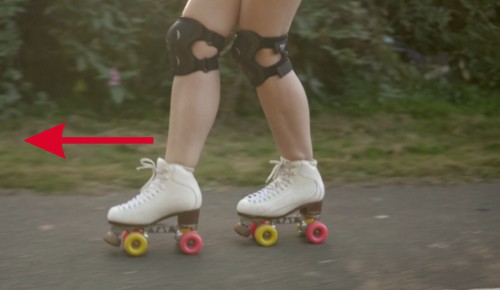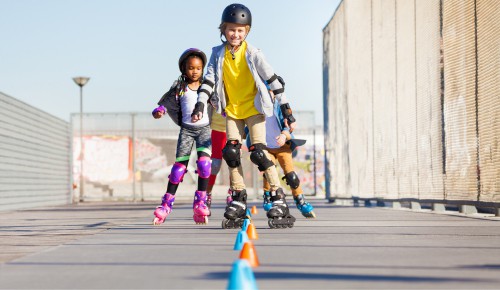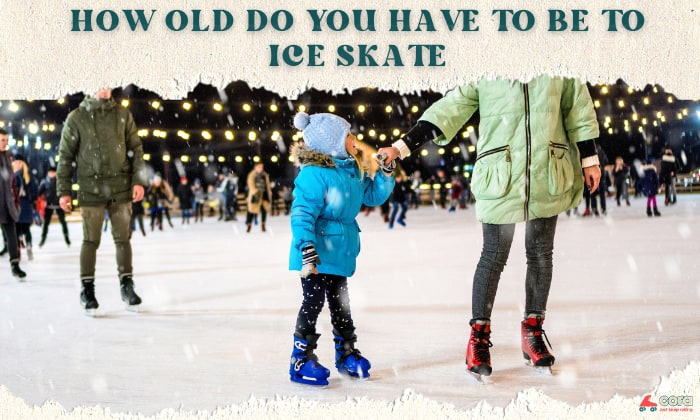If you are new to roller skating and looking to improve your skills, there are several beginner roller skating drills you can try. These drills will help you develop better balance, master basic skills, and enhance your overall roller skate techniques.
This guide goes through various fundamental roller skating drills explicitly designed for beginners, such as leg balance, marching strides, side stepping, bubble, stepping forward, rolling spins, and front crossover.
So, grab your skates and put on your safety gear to embark on this thrilling journey together.
Page Contents
8 Roller Skating Practice Drills
1. Leg balance
Working on leg balance is fundamental for maintaining stability and control while roller skating. To improve balance, practice standing on one leg with your arms outstretched before switching to the other foot.
Aside from improving your balance, this drill can also help you get used to shifting your weight and strengthening your body’s core.
2. Marching strides
Marching strides are a fundamental technique in roller skating that involves performing a series of controlled steps while gliding on your skates.
Simply march in place while wearing your skates. Lift each foot alternately, imitating the skating motion to get a feel for the movement.
This exercise is great for beginners to build coordination and serves as an excellent warm-up.
3. Side stepping:
Switching weight refers to the skill of shifting your body weight from one foot to the other smoothly. This movement is crucial for changing directions, performing tricks, and maintaining balance while skating.
To practice, bend your knees and step one foot to the other side, then step the other in the opposite direction. While stepping, remember to lift the foot completely off the ground.
4. Bubble
The “bubble” technique involves maintaining a slight bend in your knees while your feet move in a circular pattern. By mastering the “bubble,” you’ll have a better grasp of skating forward, backward and stopping.
In addition, this will set the foundation for turning, especially at high speed.
5. Cruising forward
Focus on aligning your body properly, with your weight centered over your skates. Use smooth and controlled strides to maintain momentum.
Make sure to push through the whole foot while striding, from the heel to the toe, to maximize efficiency and maintain a consistent speed.
If you’re not confident cruising forward, practice sliding in place first. Simply bend your knees and slide your feet in opposite directions. In this instance, you’d want to keep your toes and heels on the floor.
6. Heel-toe manuals:
Simply put, a heel-toe manual involves gliding forward/backward while balancing on two trucks on each skate. Depending on your preference, you can do the front foot heel and back foot toe or vice versa. Most people will find the former stance easier to do.
Once you master the heel-toe manuals, you’ll be able to explore other manuals, such as the toe-toe or heel-heel ones. You can also move on to more demanding techniques like a two-foot spin.
7. Rolling spins
Rolling spins involve spinning while moving forward on your skates. To execute it, start by moving your feet heel-to-heel to initiate the spin.
Visualize tracing a “C” on the ground with your skates. You will feel the momentum building as you shift your weight and move your feet in a curved path.
8. Front crossovers:
Front crossovers are a technique used to smoothly transition from one direction to another while maintaining forward momentum. To start, push one foot over the other in a diagonal manner while gliding, then repeat with the other foot.
As you master this, you can work on improving the fluidity and speed of your crossovers, allowing you to make graceful and efficient turns.
3 Roller Skating Exercises
1. Cone skating
Cone skating involves setting up a series of cones in a pattern and maneuvering through them on your skates. This exercise is an excellent way to enhance your ability to navigate obstacles and make quick direction changes.
2. Interval training
Interval training alternates between periods of intense effort and recovery to help you develop bursts of speed while skating. For roller skating, this involves sprinting for a short distance, followed by a slower-paced recovery phase.
3. Long distance skating
Long distance skating focuses on covering substantial distances at a steady pace. This exercise is great for building endurance and stamina.
It also allows you to practice maintaining a consistent pace and refining your technique over extended periods.
Conclusion
By consistently practicing these beginner roller skating drills, you will gradually build your skills and confidence. Remember, progress takes time, so be patient with yourself and enjoy the learning process. Happy skating!
Do you know any other roller skating drills for beginners? If so, feel free to share it with us and your fellow readers.

Harrison is a skating enthusiast who picked up the sport during her student exchange years in Canada. She has been a skating coach for children and teens for 3 years and now holds classes as a freelancer. Harrison entwines her experience leading skating classes in the content published on Cora to help readers fall in love with skating, just like she did.



















